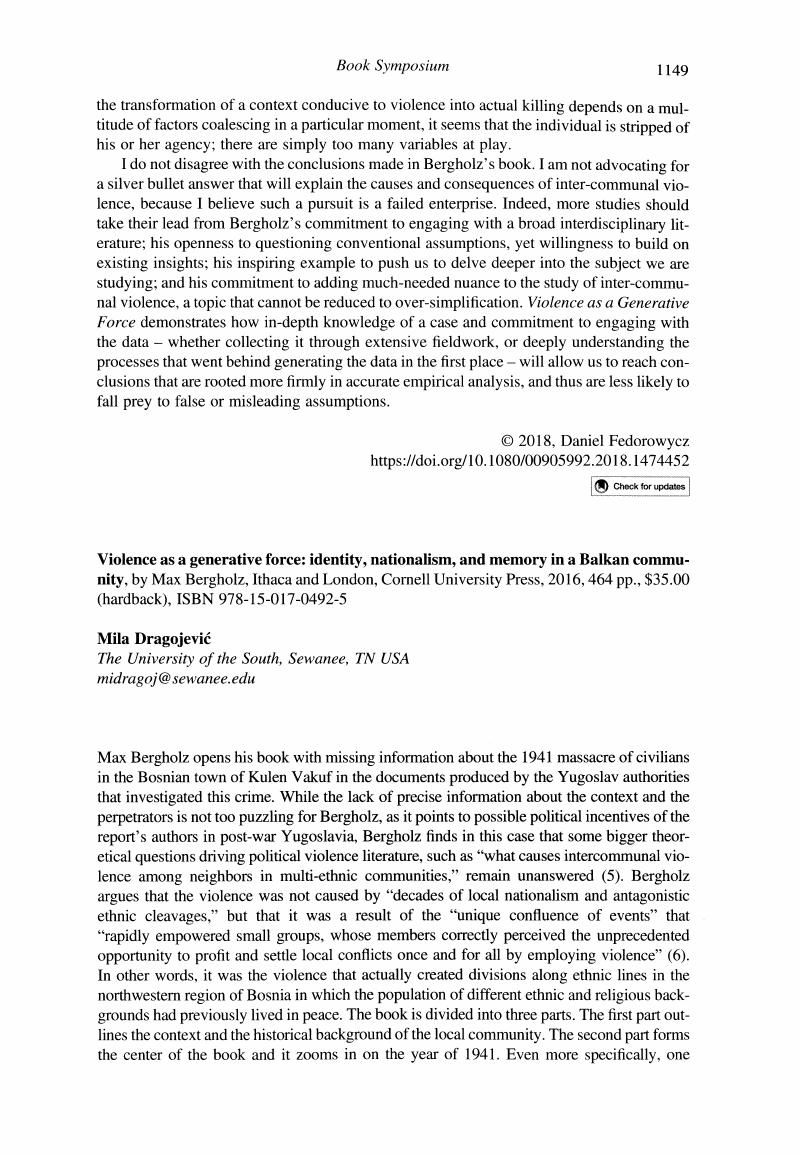No CrossRef data available.
Article contents
Violence as a generative force: identity, nationalism, and memory in a Balkan community, by Max Bergholz, Ithaca and London, Cornell University Press, 2016, 464 pp., $35.00 (hardback), ISBN 978-15-017-0492-5
Published online by Cambridge University Press: 10 January 2019
Abstract
An abstract is not available for this content so a preview has been provided. Please use the Get access link above for information on how to access this content.

- Type
- Book Symposium
- Information
- Nationalities Papers , Volume 46 , Issue 6: Special Section: The evolution of nationhood in 20th century Europe: Lessons from the Northern Adriatic borderlands , November 2018 , pp. 1149 - 1152
- Copyright
- Copyright © 2018 Association for the Study of Nationalities
References
Balcells, Laia. 2017. Rivalry and Revenge: The Politics of Violence during Civil War. New York: Cambridge University Press.Google Scholar
Cederman, Lars-Erik, Gleditsch, Kristian Skrede, and Buhaug, Halvard. 2013. Inequality, Grievances, and Civil War. New York: Cambridge University Press.Google Scholar
Collier, Paul, and Hoeffler, Anke. 2004. “Greed and Grievance in Civil War.” Oxford Economic Papers
56 (4): 563–595.Google Scholar
Dragojević, Mila. 2016. “Violence and the Production of Borders in Western Slavonia.” Slavic Review
75 (2): 422–445.Google Scholar
Fearon, James D., and Laitin, David D.
2003. “Ethnicity, Insurgency, and Civil War.” American Political Science Review
97 (1): 75–90.Google Scholar
Kalyvas, Stathis. 2006. The Logic of Violence in Civil War. New York: Cambridge University Press.Google Scholar
Straus, Scott. 2015. Making and Unmaking Nations: War, Leadership, and Genocide in Modern Africa. Ithaca, NY: Cornell University Press.Google Scholar


